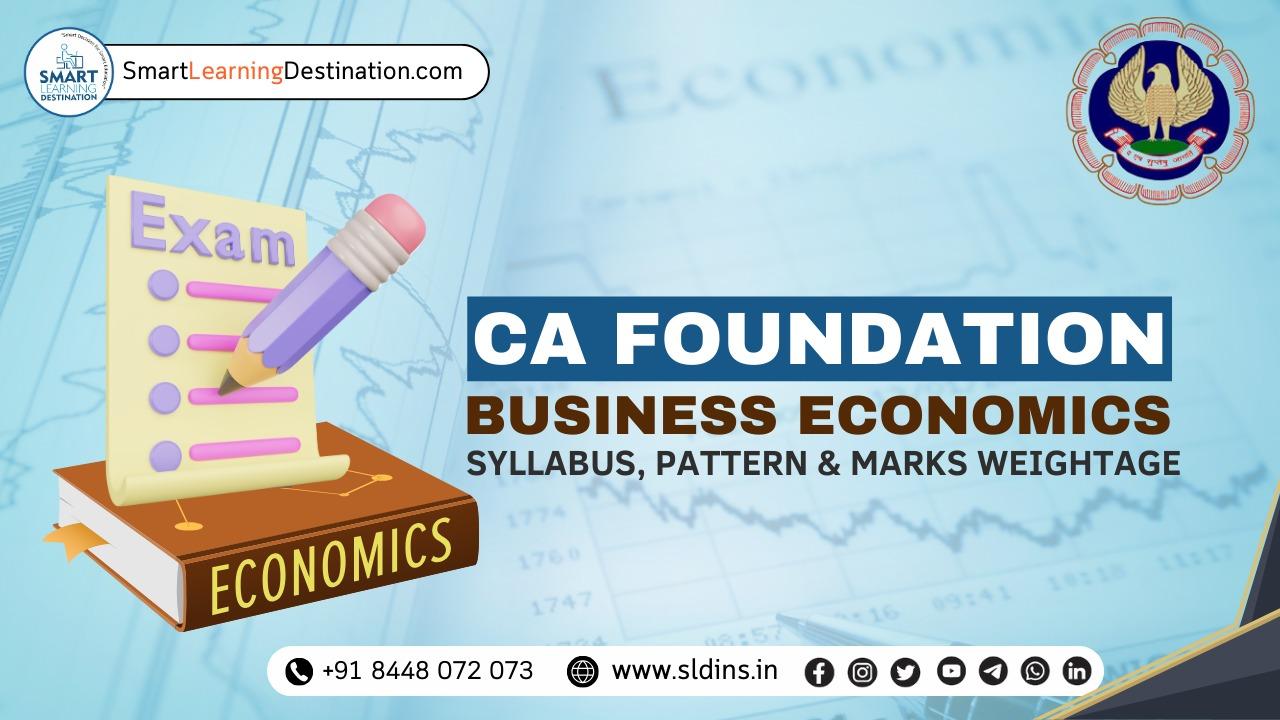For aspiring Chartered Accountants, the CA Foundation exam is a significant first step. Conducted twice a year, this exam evaluates foundational knowledge across various subjects, including Business Economics, which is Paper 4. This article will guide you through the Business Economics paper's syllabus, format, weightage, and preparation tips to help you approach the exam with confidence.
Understanding the Exam Pattern
The CA Foundation exam includes four papers, each designed to test different competencies. Papers 1 and 2 are subjective, while Papers 3 and 4, including Business Economics, are objective. The Business Economics paper is a 100-mark exam, with a duration of 2 hours. This paper assesses candidates on economic principles, theories, and applications, requiring a mix of theoretical understanding and analytical thinking.
The exam is available in both English and Hindi, making it accessible to a broader range of candidates. Given its objective nature, answering accurately and efficiently is crucial to score well. To pass the CA Foundation exam overall, students need at least 40% in each paper and an aggregate of 50% across all subjects.
Syllabus Overview
The syllabus for the Business Economics paper covers essential economic topics and theories with a focus on business applications. Here’s a breakdown of the key sections:
- Nature and Scope of Business Economics
This section introduces the role of economics in business decision-making and addresses basic economic problems like resource allocation and pricing mechanisms. - Theory of Demand and Supply
Candidates will explore the fundamental laws of demand and supply, elasticity concepts, and consumer behavior theories, which are critical for understanding market dynamics. - Production and Cost
This segment covers factors of production, short- and long-term production theories, and various cost concepts. Understanding these is essential for effective resource management in business. - Market Structures and Price Determination
In this section, students learn about different market structures like monopoly, perfect competition, and oligopoly, along with price determination strategies in each. - National Income Determination
The syllabus also includes national income accounting and Keynesian income theory, focusing on how national income is measured and determined in an economy. - Business Cycles
This unit discusses the cyclical nature of economies, examining phases, characteristics, and causes of economic fluctuations. - Public Finance
Candidates study fiscal policies, government intervention in markets, and budgeting principles, giving them insights into the financial operations of a country. - Money Market
Covering money demand and supply theories, this section provides an understanding of monetary policy and the role of money in the economy. - International Trade
This part explores international trade theories, trade policies, exchange rates, and foreign investments, emphasizing the interconnectedness of global economies. - Indian Economy
The final section focuses on the Indian economic structure, covering historical developments and contemporary issues.
Each section of the syllabus is aimed at building analytical skills and economic understanding to tackle real-world business issues.
Marks Weightage Breakdown
Here's a rough idea of the marks distribution across the topics in Business Economics:
- Introduction to Business Economics – 5%
- Theory of Demand and Supply – 10%
- Theory of Production and Cost – 10%
- Price Determination in Markets – 15%
- National Income Determination – 15%
- Business Cycles – 5%
- Public Finance – 10%
- Money Market – 10%
- International Trade – 10%
- Indian Economy – 10%
This weightage can guide your study focus, helping you allocate more time to high-mark topics like price determination and national income.
Passing Criteria and Preparation Tips
To pass the CA Foundation exam, a candidate must score at least 40% in each paper and maintain a 50% aggregate across all four papers. For Business Economics specifically, students should concentrate on conceptual clarity, as the objective format demands precision.
Here are some effective strategies:
- Study the Syllabus Thoroughly
Familiarize yourself with the syllabus provided by ICAI, and use study materials recommended by the institute. - Practice with Mock Tests
ICAI offers mock tests that simulate the actual exam. Practicing with these will help you gauge your preparation and improve your time management. - Focus on High-Weight Topics
Allocate more study time to chapters with higher marks weightage, like market structures and national income determination, to maximize your score. - Utilize Trusted Study Resources
Besides ICAI materials, consider reputable textbooks and study guides to deepen your understanding of complex concepts. - Time Management
Create a study schedule that covers each topic and allows time for revision. Practicing under timed conditions can also improve your speed and accuracy in the objective format.
FAQs
- How many subjects are in the CA Foundation exam?
The CA Foundation exam includes four subjects: Principles and Practice of Accounting, Business Laws, Business Mathematics, and Business Economics. - What are the passing marks?
Candidates need to score at least 40% in each paper and an overall 50% aggregate across all four papers to pass. - How long should I study each day?
Top-performing candidates often study 12-13 hours daily, but it’s essential to focus on quality study hours rather than just the quantity.
The CA Foundation Business Economics paper is a challenging but achievable milestone with the right strategy, dedication, and resources. By focusing on understanding economic principles and honing your objective question-solving skills, you’ll be well-prepared to succeed in the 2024 exam.
Conclusion
The CA Foundation Business Economics paper is integral to the CA Foundation syllabus, and performing well requires a blend of conceptual understanding and strategic preparation. With the right focus on high-weightage topics and regular MCQ practice, students can enhance their chances of scoring well. Remember to balance your studies with periodic revision sessions and practice to reinforce your knowledge.
By preparing thoroughly and approaching the exam with confidence, CA aspirants can successfully navigate the Business Economics paper and move one step closer to achieving their goal of becoming a Chartered Accountant.
